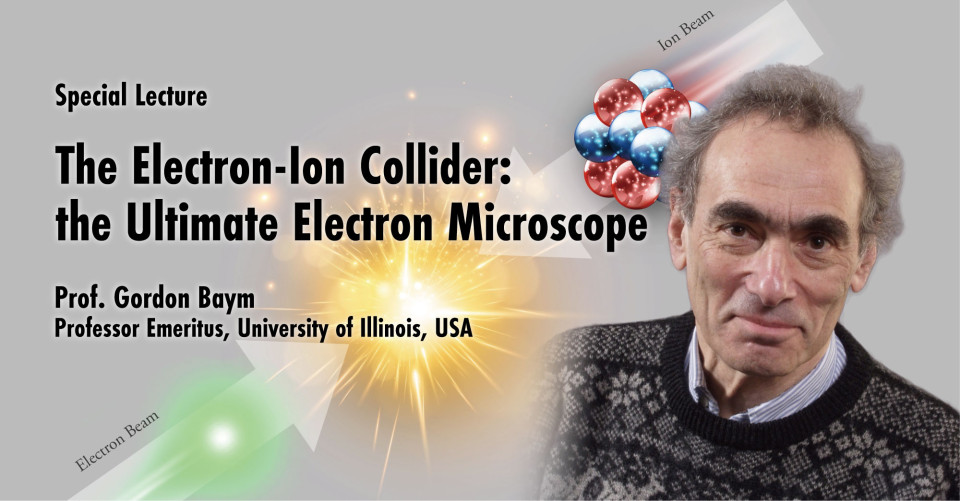The Electron-Ion Collider: the Ultimate Electron Microscope
- Date
- February 20 (Mon) 15:00 - 16:30, 2023 (JST)
- Speaker
-
- Gordon Baym (Professor Emeritus, University of Illinois, USA)
- Venue
- Okochi Hall (Main Venue)
- via Zoom
- Language
- English
- Host
- Tetsuo Hatsuda
How does the nucleon get its mass? Certainly not from the Higgs -- the rest masses of the quarks it contains add up to only one percent of the nucleon mass. Rather the remaining 99% comes from the zero-point energy of the quarks, antiquarks and gluons localized in the nucleon. How do nuclei differ from being a simple collection of nucleons? How are the gluons, for example, distributed in nuclei? Do they stick out, or are they clumped towards the center of the nucleon? Gluons, like dark matter unseen but playing the crucial role in gluing matter together, are strongly interacting. Do such gluons form new emergent quantum states in nuclei, as in condensed matter physics? And how is the spin of the proton -- the key to NMR imaging -- put together from the spin and orbital motion of the quarks and gluons in the proton?
Answering these basic questions about the constituents of the matter of our everyday world, and related questions about dense nuclear matter, will, as I will discuss, be the scientific focus of the forthcoming Electron-Ion Collider (EIC), a major accelerator that will collide beams of electrons with beams of protons or heavier ions to study the internal workings of nucleons and nuclei.* The EIC, to be built at Brookhaven National Laboratory, will be world's most powerful electron microscope, with a luminosity comparable to the LHC, with highly polarized electron and proton beams and a center-of-mass energy of some 100 GeV; its science will be a striking culmination of the study of nuclei by electron scattering begun in the 1950's.
The accelerator challenges in building the EIC, which I will briefly touch on, are formidable. The EIC is the only major United States accelerator project in the foreseeable future; its development will preserve and develop capabilities in accelerator technology, for nuclear, material, biological, and chemical sciences, and applied areas, not to mention possible future large-scale accelerator projects in high energy physics.
*To read about the EIC in advance, see the National Research Council/ National Academy of Sciences report, An Assessment of U.S.-Based Electron-Ion Collider Science, which can be freely downloaded from the first URL below, as well as the EIC Users Group White Paper (Nov. 2022) available from the second URL below.
This is a closed event for scientists. Non-scientists are not allowed to attend. If you are not a member or related person and would like to attend, please contact us using the inquiry form. Please note that the event organizer or speaker must authorize your request to attend.

